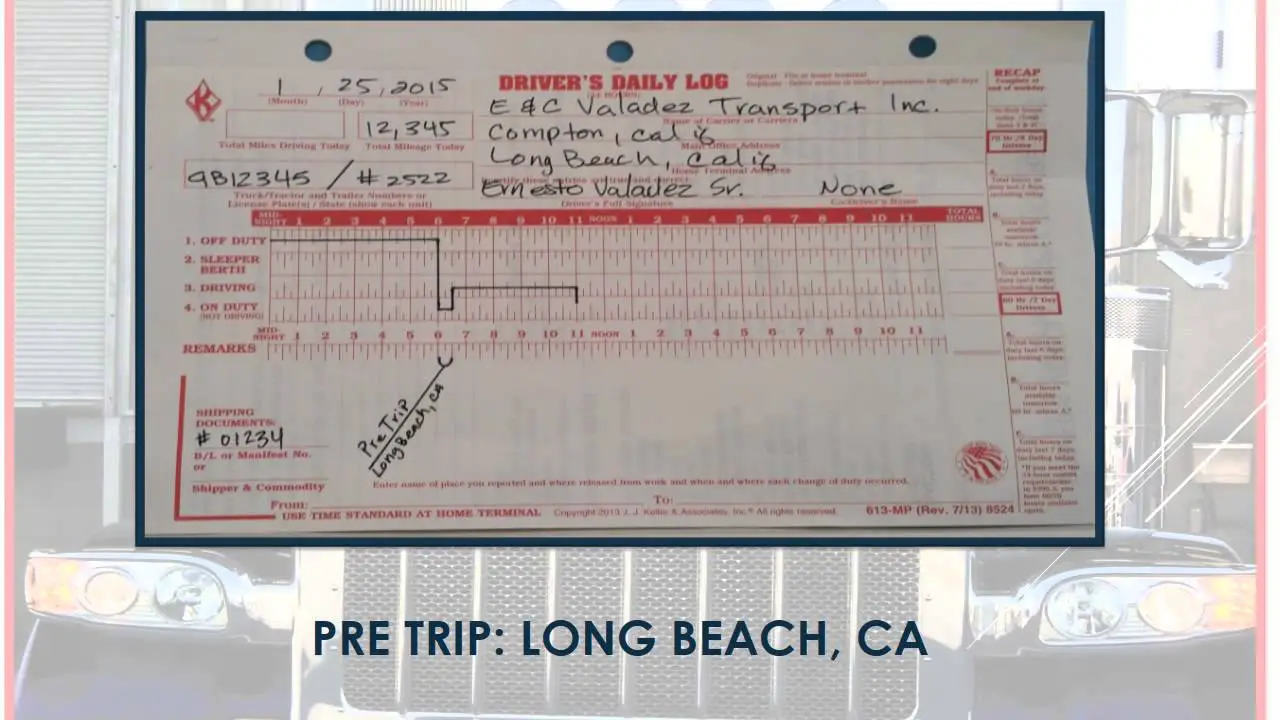
To fill out a driver’s daily log, accurately record hours driven, rest breaks, and any stops made. Provide detailed information in the designated sections to comply with regulations.
Keeping a detailed daily log is crucial for drivers as it helps maintain compliance with legal requirements and ensures safety on the roads. Logging driving hours, rest periods, and stops made during the journey is essential for documentation and accountability.
By following the proper procedures and accurately recording information in the daily log, drivers can demonstrate adherence to regulations and protect themselves from potential citations or penalties. Let’s delve deeper into the process of filling out a driver’s daily log and explore the key steps to follow for seamless and compliant record-keeping.
Navigate As You Want: [show]
Understanding The Format
When filling out a driver’s daily log, it’s crucial to understand the format and components. The log should include the date, driver’s details, vehicle information, and duty status. It’s also important to accurately record the driver’s duty status, total miles driven, and any breaks or rest periods. Each log entry should be clear and legible to ensure compliance with regulations. Additionally, sections for remarks, hours of service, and signature are essential for a complete and accurate log. Understanding the format and components of the driver’s daily log ensures proper documentation and compliance with regulations.

Credit: www.wikihow.com
Step-by-step Guide To Filling Out The Log
In this guide, learn how to fill out a driver’s daily log step by step. Follow the outlined process to ensure accurate and compliant recording of activities and hours. The guide provides clear instructions to help drivers maintain precise and complete logs for regulatory compliance.
| Date and Time | Ensure to accurately record date and time for each entry. |
| Driver Information | Include driver’s name, license number, and signature on the log. |
| Carrier Information | Fill in the carrier’s name, USDOT number, and address details. |
| Vehicle Information | Specify the vehicle number, license plate, and VIN of the truck. |
| Trip Information | Document starting location, destination, and miles driven for each trip. |
| Duty Status and Remarks | Record changes in activity and any additional notes in this section. |
| Certification | Driver must sign and certify the log to indicate accuracy and completion. |
Common Mistakes To Avoid
Learn how to fill out your driver’s daily log accurately and efficiently by avoiding common mistakes. Follow these 6 guidelines to ensure your log entries are SEO friendly, concise, and engaging for readers.
| Inaccurate or Missing Entries |
| Make sure to clearly and accurately record all necessary information. |
| Failing to Update Duty Status |
| Remember to update your duty status whenever there is a change. |
| Incorrect Calculations |
| Double-check all math to avoid errors in your driver’s daily log. |
| Illegible Handwriting |
| Ensure your handwriting is clear and easy to read by others. |
Credit: www.businessnewsdaily.com

Credit: m.youtube.com
Frequently Asked Questions Of How To Fill Out Drivers Daily Log
How To Fill Out A Driver’s Daily Log?
To fill out a driver’s daily log, start by noting the date, your name, and driver’s license number. Record the vehicle information, including the license plate and registration number. Document the starting and ending odometer readings, as well as the total distance traveled.
For each trip, indicate the time, location, and purpose. Lastly, sign and date the log to ensure accuracy and legal compliance.
What Information Should Be Included In A Driver’s Daily Log?
A driver’s daily log should include essential information such as the date, your name, and driver’s license number. It should also include vehicle details like the license plate and registration number. Record the starting and ending odometer readings, as well as the total distance traveled.
Include trip details like time, location, and purpose to maintain accurate records.
Why Is It Important To Fill Out A Driver’s Daily Log?
Filling out a driver’s daily log is essential for various reasons. It helps ensure compliance with legal requirements, particularly for commercial drivers who must adhere to hours-of-service regulations. Accurate record-keeping helps track mileage, fuel consumption, and maintenance needs, enabling better fleet management.
Furthermore, it can serve as crucial evidence in case of accidents or legal disputes.
Conclusion
Filling out a driver’s daily log is a crucial task for ensuring road safety and compliance with regulations. By following the correct procedures and maintaining accurate records, drivers and companies can demonstrate their commitment to safety and professionalism. Embracing these practices will not only enhance operational efficiency but also contribute to a safer and more trustworthy transportation industry overall.



